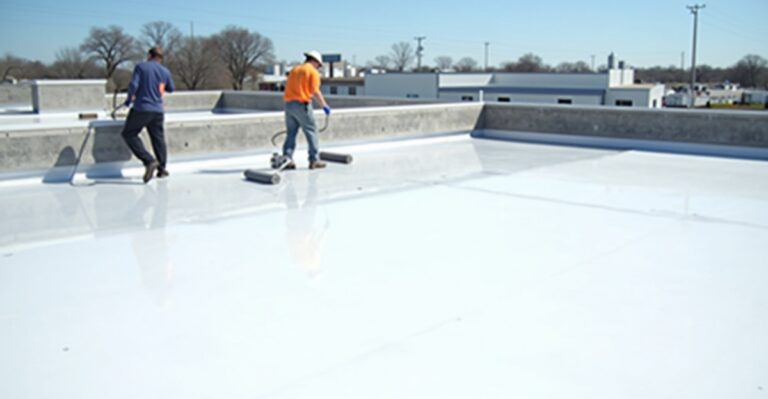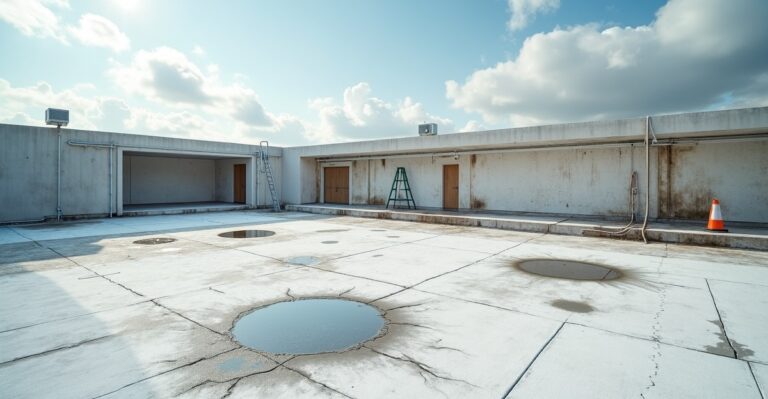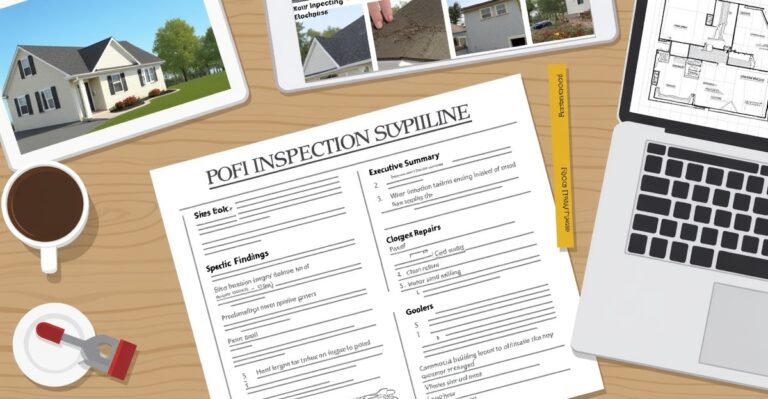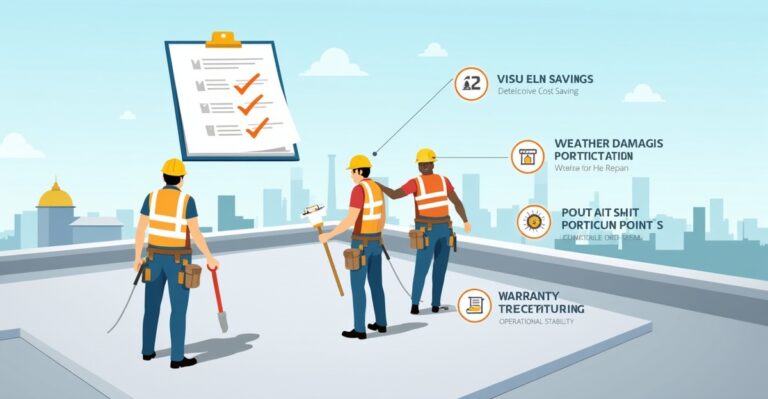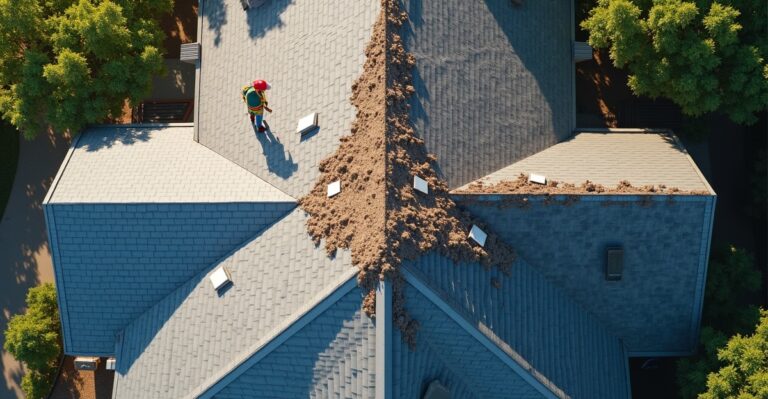What Causes Roof Leaks—and How to Fix Them
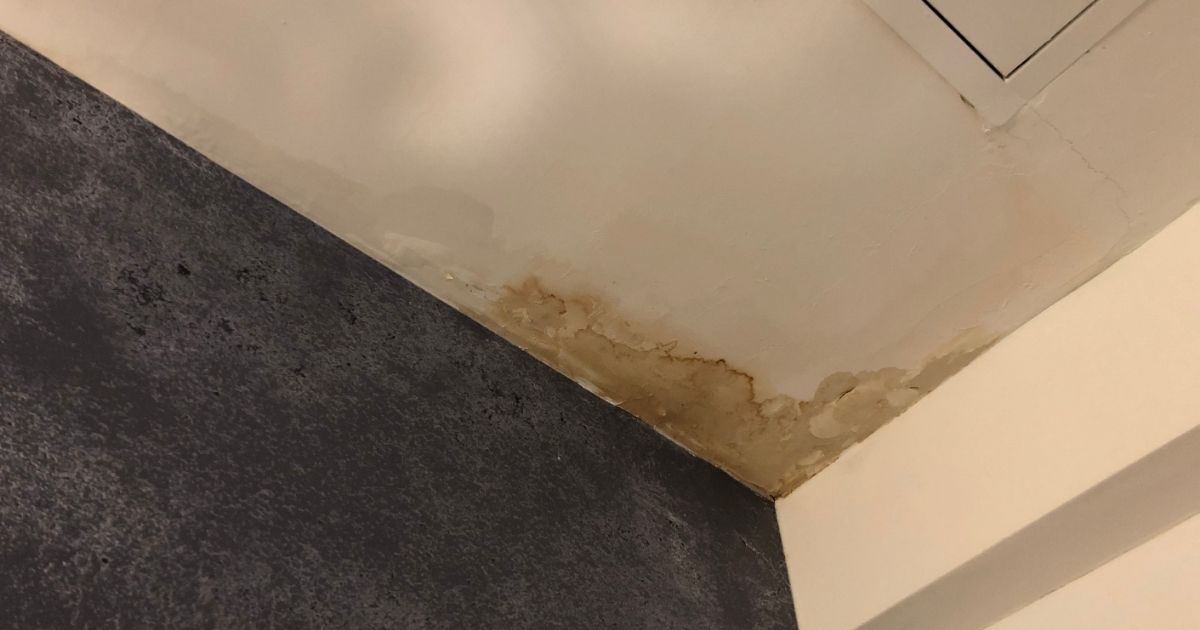
A roof leak doesn’t just mean a puddle on the floor—it could be a sign of deeper damage, rising energy costs, or even long-term structural issues. Whether you’re managing a multi-property portfolio or maintaining your family home, understanding the causes of roof leaks is the first step toward protecting your investment.
In this guide, we’ll break down the most common reasons roofs fail, how to spot early warning signs, what repairs cost, and how to prevent future problems before they start. Whether you’re dealing with flat roofs, shingles, or solar panel systems, this article is packed with practical advice you can trust.
Here’s what we’ll cover:
- Understanding Roof Leaks: Why They Matter
- The Most Common Causes of Roof Leaks
- Signs You Might Have a Roof Leak
- How to Fix Roof Leaks: DIY vs. Professional Repair
- Roof Leak Repair Costs: What to Expect
- How to Prevent Future Roof Leaks
- Conclusion: Get Ahead of Roof Leaks—With Confidence
Let’s start by looking at why roof leaks are more than just a surface-level problem.
Understanding Roof Leaks: Why They Matter
A roof leak might start small—a faint water stain on the ceiling or a few damp tiles after heavy rain—but left unchecked, it can quickly turn into a serious problem. What seems like a minor inconvenience could lead to costly structural repairs, interior damage, or even business downtime if you’re managing commercial properties.
Your roof is more than just a cover; it’s a critical part of your building envelope—the barrier that protects everything inside from the elements. When that barrier is compromised, water doesn’t just seep in; it travels. Moisture can work its way into insulation, drywall, and even electrical systems, creating a ripple effect of damage that’s expensive and time-consuming to fix.
Leaks also contribute to energy efficiency loss when water enters your roofing system, compromises insulation and allows conditioned air to escape. (See “why roof leaks should always be fixed as soon as they’re noticed” for more.). For homeowners, that means higher utility bills. For commercial building owners, it can impact HVAC efficiency, increase operational costs, and raise concerns about compliance and safety.
Beyond property damage, roof leaks can disrupt your daily life or business operations. A persistent leak in a home can lead to mold growth or indoor air quality issues. In a commercial setting—like an office, apartment complex, or retail space—it can mean unhappy tenants, halted operations, or potential liability if the issue isn’t addressed quickly.
The takeaway: even a small leak is never “just a leak.” Acting early protects your property, your investment, and your peace of mind. In the next section, we’ll look at the most common causes of roof leaks and how to identify what’s really going on above you.
The Most Common Causes of Roof Leaks
Roof leaks can happen for a variety of reasons—some obvious, others hidden until real damage sets in. Whether you’re dealing with a residential home or a large commercial facility, knowing what causes roof leaks can help you address issues before they escalate. Here are the most common culprits we see across both property types:
Flashing Deterioration
Flashing is the thin metal installed around roof edges, chimneys, vents, and skylights to direct water away from seams and joints. Over time, exposure to weather, temperature changes, and poor installation can cause flashing to crack, warp, or pull away from the roof surface. Once it deteriorates, water has a direct path into the building beneath.
Common signs: rust stains, water spots near chimneys or vents, or missing flashing pieces after storms.
Roof Membrane Failure (Flat Roofs)
For commercial buildings with flat or low-slope roofs, a membrane system (like TPO, EPDM, or modified bitumen) acts as the main waterproof barrier. When that membrane blisters, cracks, or separates at seams, water can pool and eventually penetrate the underlying structure—a condition known as ponding.
Why it happens: aging material, poor installation, or mechanical damage (e.g., foot traffic, HVAC servicing).
Aging Roofing Materials and UV Exposure
All roofing materials degrade over time. Shingles curl, tiles crack, and metal roofs expand and contract until fasteners loosen. Sunlight—especially UV rays—can accelerate wear by breaking down protective coatings and drying out sealants. This is particularly common in areas with intense sun exposure and minimal shade.
Clogged Gutters and Downspouts
Gutters are designed to move water away from your roof and foundation. When they’re clogged with leaves, dirt, or debris, water backs up and spills over the edges—often into roof decking or fascia boards, which highlights the importance of gutter maintenance. Over time, this leads to rot and leak paths along roof edges.
Why it matters: This issue is often overlooked in both homes and multi-unit buildings, but it’s one of the simplest to prevent.
Poor Roof Ventilation and Attic Moisture
A poorly ventilated attic can trap heat and moisture, leading to condensation that builds up under the roof deck. Over time, this causes mold, wood rot, and even shingle deterioration from the inside out. In cold climates, it can also lead to ice dams that back up under the roofing system.
How it shows up: musty attic smells, mold around roof framing, or unusually high indoor humidity.
Storm Damage: Hail, Wind, and Debris
Storms are one of the most frequent and aggressive causes of roof leaks. High winds can lift or tear shingles. Hail can dent metal panels or crack tiles. Falling branches can puncture or dislodge roofing materials. After severe weather, even a roof that “looks okay” from the ground may be hiding damage that will leak months later.
When to be alert: after hailstorms, hurricanes, or prolonged heavy rains—especially in areas with older roofs or past patch jobs.
The bottom line: Most roof leaks don’t come out of nowhere. They build over time—starting small, then growing into costly damage. By knowing what to look for, you can catch issues early and take action before they affect the structure, safety, or energy efficiency of your property.
Signs You Might Have a Roof Leak
Not all roof leaks announce themselves with a drip in the middle of the living room. Many start quietly and worsen over time—often causing damage long before you notice water inside. Knowing what to look for can help you catch a problem early and prevent bigger (and more expensive) repairs down the road.
Visible Signs: Stains, Drips, Mold, Missing Shingles
Some leaks are obvious. If you notice any of the following, your roof is likely letting water through:
- Ceiling stains or water spots that grow over time
- Dripping water during or after rainstorms
- Peeling paint or bubbling walls near ceilings
- Mold or mildew in corners or along ceiling lines
- Missing, cracked, or curled shingles on sloped roofs
- Debris or granules in gutters from deteriorating shingles
These signs often show up after the damage has already reached your interior. That’s why it’s important to act quickly if you notice any of them.
Hidden Red Flags: High Energy Bills, Musty Odors, Ceiling Sagging
Other signs are easier to miss—but just as serious:
- Rising energy bills (a potential sign of wet insulation or air loss)
- Musty smells in attic spaces, closets, or upper floors
- Sagging ceilings or warped drywall
- Damp or rotting wood in attic joists or roof sheathing
- Visible light coming through the roof boards in the attic
- Unexpected mold growth in ceilings or corners
These are the kinds of hidden roof damage that can go unnoticed until they cause structural issues or indoor air quality problems. They’re also indicators of potential energy efficiency loss due to roof leaks, which can impact your long-term heating and cooling costs.
When to Call a Professional
If you’re seeing one or more of these signs, it’s time to bring in a qualified roofing expert. At RayPro, we make the process simple and stress-free:
- We inspect your roof thoroughly—inside and out
- We identify the true source of the leak, not just the symptoms
- We give you a clear, honest assessment and a transparent repair plan
- We’re licensed, insured, and trusted by thousands across 17 states
Here’s a quick checklist to help you decide when to call in the pros:
- You’ve spotted ceiling stains or dripping water
- You’ve noticed mold or musty smells in the attic
- Shingles or flashing are visibly damaged or missing
- Your energy bills have spiked without explanation
- You’re unsure how long your current roof has been in place
- You just went through a major storm
Tip: Even if you’re not sure it’s a leak, it’s better to get it checked now than to wait for major damage. A professional inspection can give you peace of mind—and possibly save you thousands later.
How to Fix Roof Leaks: DIY vs. Professional Repair
When a roof leak shows up, your first instinct might be to fix it yourself—and in some cases, that’s okay as a short-term solution. But not all leaks are equal, and a patch job that works today might lead to bigger problems tomorrow. Here’s how to know what you can handle on your own—and when it’s time to call a licensed professional.
Temporary Fixes You Can Try—With Caution
If water is actively leaking into your home or building, and professional help isn’t immediately available, here are a few short-term steps you can take:
- Tarp the affected area (if it’s safe to access): Use a heavy-duty tarp and secure it over the leak to prevent further water intrusion.
- Apply roofing tape or sealant to small cracks or holes in shingles or flashing.
- Catch dripping water inside with buckets or plastic sheeting to reduce interior damage.
- Clear gutters and downspouts to relieve water backup during or after heavy rain.
Important: These are temporary solutions only. They don’t solve the root problem and shouldn’t replace a professional roof repair. Attempting to fix a roof without the right tools, training, or safety equipment can also lead to injury—or make the damage worse.
Why Professional Repairs Are Worth It
When it comes to lasting protection and peace of mind, professional roof repairs are the smarter investment. Here’s why:
- We find the real issue. Leaks often travel before they show up indoors. A pro knows where to look and how to trace the source.
- We do it safely. Roofing work—especially on steep slopes or large buildings—requires safety gear and fall protection.
- We build to last. A proper repair includes material matching, structural fixes, and waterproof sealing—not just surface patching.
- You get a warranty. With RayPro, all work is backed by strong roofing warranties and guarantees that protect your investment.
And for commercial properties, repairs aren’t just about fixing a leak—they’re about ensuring compliance, avoiding tenant disruptions, and protecting long-term ROI. Working with a licensed and insured roofing contractor like RayPro helps you stay aligned with building codes, insurance requirements, and multi-site consistency.
When Special Expertise Is Needed (e.g., Flat Roofs, Solar Detach/Reset)
Some repairs require specialized experience and coordination—especially in complex or high-value properties.
- Flat or low-slope roofs often involve membrane systems that require expert handling to avoid voiding warranties.
- Buildings with rooftop solar may need a solar panel detach and reset service to safely access and repair the underlying roof. RayPro handles both roofing and solar coordination, so you don’t have to hire multiple vendors.
- Commercial facilities may require special materials, permits, or timeline coordination. We manage the full process to minimize disruption.
Bottom line: There’s a time and place for a DIY patch. But for lasting results—and real protection—it pays to bring in a team that knows what they’re doing.
Roof Leak Repair Costs: What to Expect
One of the most common questions we hear is: How much does it cost to fix a leaking roof? The honest answer is—it depends. Costs can vary widely based on the size of the leak, roofing material, accessibility, and whether you’re dealing with a home or a commercial building. In this section, we’ll break it down so you know what to expect and how to budget smartly.
Residential Roof Leak Repair Costs
For homeowners, roof leak repairs typically range from $250 to $1,500 for minor to moderate issues. More extensive damage—like structural repairs, large-area replacement, or hidden water damage—can push costs up to $3,000 or more.
Factors that affect residential repair pricing:
- Type of roofing material (shingle, tile, metal, etc.)
- Extent of water damage to decking, insulation, or ceilings
- Accessibility—steep slopes or second-story roofs often cost more
- Emergency repairs outside regular hours
While it’s tempting to shop by price alone, it’s important to weigh the cost vs. value of roof repair. A cheap patch job may not hold up to the next storm—and could end up costing more long-term.
Commercial Roof Leak Repair Considerations
Commercial roof repairs are usually more complex and start at $750 to $5,000+, depending on roof size, material system (e.g., TPO, EPDM, metal), and whether equipment like HVAC units or solar panels are involved.
Commercial pricing variables include:
- Flat or low-slope systems that require membrane or coating repairs
- Roof access logistics (lifts, safety requirements, staging)
- Code and compliance requirements for repairs and documentation
- Operational concerns—we often schedule repairs to minimize downtime for tenants or customers
As a licensed and insured roofing contractor, RayPro specializes in handling multi-site and high-value property repairs with minimal disruption.
Does Insurance Cover It? What You Need to Know
If you’re wondering, Is roof leak repair covered by homeowners insurance?—the answer is: sometimes.
Insurance may cover roof leaks when they result from sudden, accidental events, such as:
- Hail or wind damage
- Tree impact
- Fire
- Vandalism
However, most policies won’t cover leaks due to wear and tear, lack of maintenance, or aging roofing materials.
For commercial properties, a leaking roof insurance claim often requires documentation, inspection reports, and professional assessments—learn how to file a roof insurance claim to ensure you’re prepared. RayPro can help with this process by providing detailed photo documentation and written reports.
Tips for navigating insurance:
- Take photos of any visible damage immediately
- Avoid starting major repairs until the insurance adjuster has inspected
- Request written estimates and inspection summaries from your roofer
Bottom line: Coverage varies. But working with a reputable contractor like RayPro can help you get the clarity—and support—you need.
How to Prevent Future Roof Leaks
The best way to avoid costly roof repairs? Catch problems before they start. Roof leaks are often preventable with the right maintenance strategy—and a reliable partner who knows what to look for. Whether you manage commercial properties or own a single-family home, a proactive approach can protect your investment and save thousands in the long run.
Routine Inspections: When and Why They Matter
Think of a roof inspection like a check-up for your property. It’s not just for when something goes wrong—it’s how you spot early signs of trouble before they escalate.
At RayPro, we recommend seasonal roofing inspections, ideally twice a year: once in the spring and again before winter. Additional inspections are smart after major storms, hail, or hurricanes.
Why it matters:
- Small issues (like cracked flashing or minor membrane damage) are easier—and cheaper—to fix early.
- Inspections extend the lifespan of your roofing system.
- They help maintain compliance and warranty validity, especially on commercial roofs.
If you can’t remember the last time your roof was professionally inspected, now is the time to schedule one.
Maintenance Tips That Actually Work
Good maintenance doesn’t have to be complicated. These roof maintenance best practices apply to both residential and commercial properties:
- Keep gutters and downspouts clear to prevent water backup.
- Trim nearby trees to avoid falling branches and leaf buildup.
- Check for signs of standing water or ponding, especially on flat roofs.
- Inspect after storms—look for displaced shingles, bent flashing, or visible debris.
- Don’t ignore attic ventilation. Poor airflow leads to moisture buildup and roof damage from the inside out.
Following a seasonal maintenance checklist helps identify small defects before they become major and costlier repairs.(See “the benefits of seasonal roof inspections” for best practices.)
What RayPro Offers for Long-Term Protection
Preventive care is where RayPro really shines. We don’t just show up when there’s a problem—we help you stay ahead of it.
Our long-term roofing protection services include:
- Scheduled preventive maintenance plans tailored to your property
- Full inspection reports with photos and repair recommendations
- Flexible scheduling for minimal disruption to your home or business
- Roofing warranties and guarantees that back our craftsmanship
- Optional solar panel detach and reset services as part of routine maintenance
For commercial clients, we also help ensure roofing compliance across multiple properties and provide standardized service reporting—making your job easier and your asset management more efficient.
The ROI of proactive roof maintenance is clear: fewer emergencies, lower repair bills, and a roof that lasts years longer than one that’s only serviced when problems arise.
Conclusion: Get Ahead of Roof Leaks—With Confidence
Roof leaks are never convenient—but they’re always important. Whether it’s a visible stain on the ceiling or a slow drip you can’t trace, even a small leak can signal bigger issues with your roofing system. The sooner you understand the causes of roof leaks, the better you can protect your home or property from damage, downtime, and rising repair costs.
At RayPro, we believe in doing things right the first time. That means giving you honest guidance, thorough inspections, and repair solutions that last. With over 17 years of experience serving residential and commercial clients across 17 states, we’re here to make roof care simple, transparent, and stress-free—no upselling, no shortcuts.
Whether you’re a homeowner looking for peace of mind or a property manager in need of multi-site service support, RayPro is ready to help.
Frequently Asked Questions
If your roof leaks during or after rain, it’s likely due to damaged flashing, clogged gutters, missing shingles, or aging materials that no longer keep water out. Rain can also expose vulnerabilities caused by poor installation or worn-out sealants. Even a small crack or loose joint can let water in once it starts pooling. A professional inspection can help identify the exact source and prevent further damage.
Some of the most common causes of roof leaks include:
Flashing deterioration around chimneys or vents
Cracked or missing shingles
Roof membrane failure (especially on flat roofs)
Clogged gutters or downspouts
Poor attic ventilation and moisture buildup
Storm damage from wind, hail, or falling debris
Aging roofing materials and UV exposure over time
Knowing what to watch for can help you catch problems early and avoid costly repairs.
The amount of downtime depends on the scope of the repair and the type of facility. Minor repairs can often be done in a few hours, while larger commercial repairs may take a few days. At RayPro, we coordinate closely with your operations team to minimize disruption, schedule around your business hours, and complete work safely and efficiently. Our goal is to keep your property protected without interrupting your bottom line.
In most cases, solar panels need to be temporarily removed to access and repair the roof underneath. This is especially true for full replacements or repairs beneath mounting brackets, where the impact of solar panel installations on roofing must be carefully addressed. RayPro offers solar panel detach and reset services as part of our roofing solutions, so you don’t have to juggle multiple contractors or risk voiding warranties.
It depends on the cause of the leak. Most insurance policies cover sudden and accidental damage, such as leaks caused by storms, fallen trees, or vandalism. However, leaks due to normal wear and tear or lack of maintenance are typically not covered.
For both homeowners and commercial property managers, we recommend reviewing your policy and documenting any damage as soon as possible. RayPro can provide detailed inspection reports to support your leaking roof insurance claim and help streamline communication with your provider.

